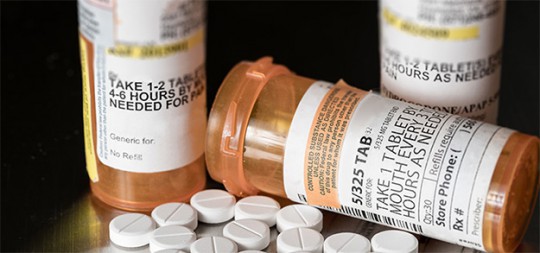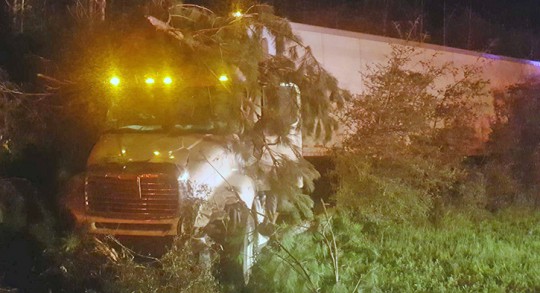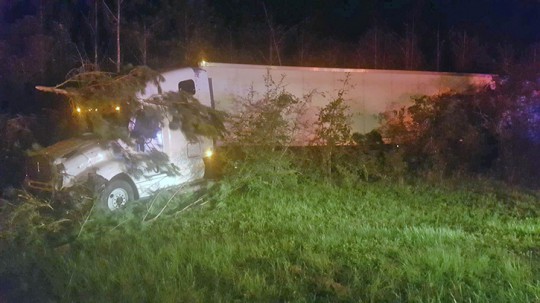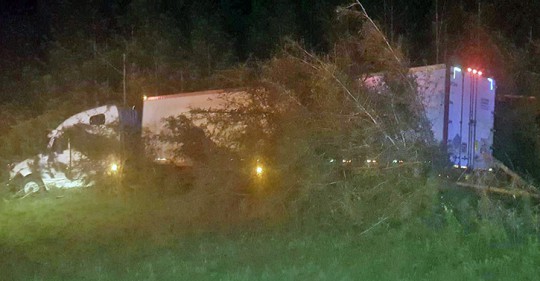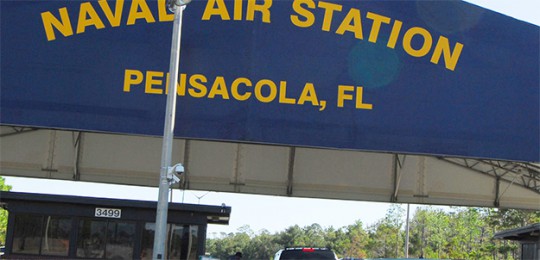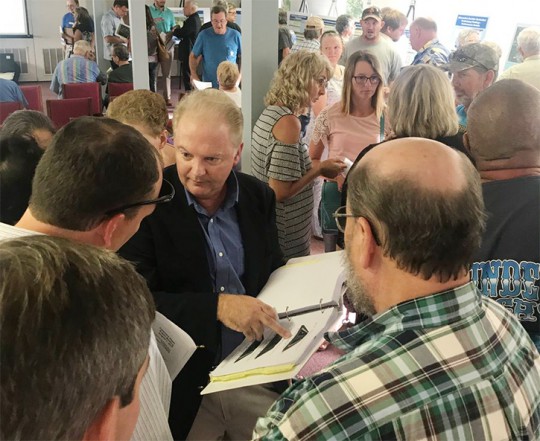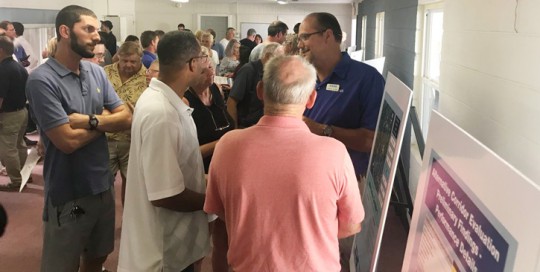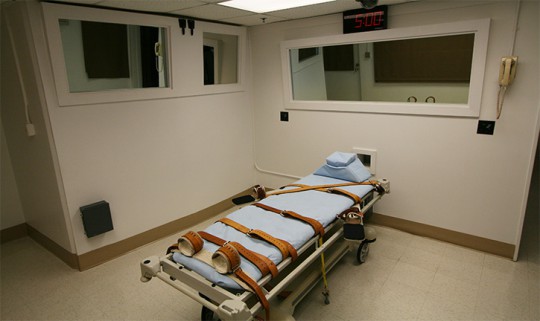New Adult Health Care Practice Opens In Century
August 9, 2017
A new adult health care practice is now open in Century.
Wednesday was opening day as Escambia Community Clinics opens its ECC Century Adult Primary Care medical practice to serve the health care needs of adults from Century and surrounding areas. The new office is located at 6021 Industrial Boulevard inside the Century Clinic of Lakeview Center. The new medical office is open Monday through Friday from 8 a.m. until 4:30 p.m.
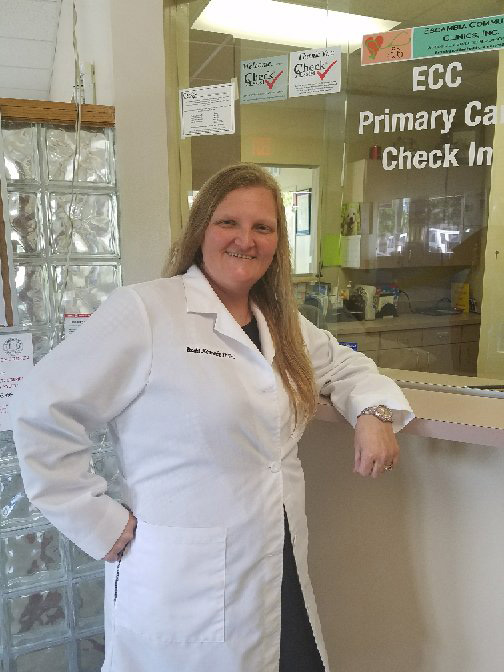 Family nurse practitioner Mamie “Paula” Kennedy, DNP, ARNP, FNP-C, is the provider for this new office, which serves adults ages 18 and up. ECC Century Adult Primary Care offers a wide range of heath care services for adults, including annual well visits, screenings, treatment of minor illnesses and injuries and management of chronic illnesses such as diabetes, high blood pressure and asthma. Patients may also access a network of support services that are offered at ECC’s other 12 locations, such as pharmacy assistance and healthcare for the homeless.
Family nurse practitioner Mamie “Paula” Kennedy, DNP, ARNP, FNP-C, is the provider for this new office, which serves adults ages 18 and up. ECC Century Adult Primary Care offers a wide range of heath care services for adults, including annual well visits, screenings, treatment of minor illnesses and injuries and management of chronic illnesses such as diabetes, high blood pressure and asthma. Patients may also access a network of support services that are offered at ECC’s other 12 locations, such as pharmacy assistance and healthcare for the homeless.
The office is now accepting calls for appointments Monday through Friday during business hours at (850) 724-4064. Same day appointments may be available. This is ECC’s second location in Century. ECC opened their Century Pediatrics and Pediatric Dental Clinic at 501 Church Street in Century earlier this year.
“We are excited to be able to bring adult primary health care services to our neighbors in Northern Escambia County. Locating this new practice in Lakeview Center’s Century clinic is a great partnership designed to improve the health and quality of life of the residents of the communities we serve,” said Chandra Smiley, executive director of Escambia Community Clinics.
ECC is a Florida Medicaid, Humana and Molina managed care provider, and accepts Alabama Medicaid and many private health insurances. ECC offers a sliding fee scale program for those individuals who do not have insurance coverage.
Payment plans are available for those persons who do not qualify or choose not to qualify for the sliding fee program. Payment plans are designed to meet each individual’s income level.
Escambia County Considers Two Proposals For New Escambia County Jail
August 9, 2017
The Escambia County Commission looked heard two presentations Tuesday for a new Escambia County Jail.
Whitesell-Green/Caddell Joint Venture made the first presentation (design pictured above). The venture is a partnership of Whitesell-Green of Pensacola and Caddell Construction of Montgomery, AL. The companies bid $128.6 million on the project.
The second presentation was from W.G. Yates & Sons Construction Co. of Philadelphia, MS (design pictured below). The company’s base bid was $129.8 million.
Both bids are negotiable after a final selection is made. The total cost with other preparation work is expected to be about $145 million.
The new jail will be constructed at the site of the McDonald Shopping Center on the southeast corner of Fairfield Drive and Pace Boulevard.
The Escambia County Commission will continue discussions of the design-build service request for proposals for the new correctional facility at the Thursday Committee of the Whole Meeting at 9 a.m.
Pictured top: Whitesell-Green/Caddell Joint Venture’s conceptional design for a new Escambia County Jail. Pictured below: W.G. Yates Construction’s design for a new Escambia County Jail. Images for NorthEscambia.com, click to enlarge.
Florida Lawmakers Take Aim At Opioids
August 9, 2017
Senate Appropriations Chairman Jack Latvala held a roundtable discussion Tuesday in Palm Beach County with lawmakers, local leaders and public-safety officials to address Florida’s opioid crisis.
Palm Beach County is one of the epicenters of the epidemic. From January through May of this year, the county had 311 opioid overdoses, compared to 258 over the same period in 2016, according to numbers from Latvala’s office. The county totaled 592 opioid-related deaths in 2016.
“This is obviously an issue that is on all of our minds,” Latvala, R-Clearwater, said during the discussion at Palm Beach State College’s Lake Worth Campus. “Everybody can make proclamations and declarations, but it’s when rubber hits road, that’s when things get going. I am here to listen and learn about this crisis.”
Drug overdose is the leading cause of accidental death in the country, with 52,404 fatal overdoses reported in 2015, according to the American Society of Addiction Medicine. Opioid addiction drove the epidemic with 20,101 overdose deaths related to prescription pain relievers and 12,990 deaths related to heroin.
Palm Beach County has taken $1 million out of reserves to address the epidemic on a local level. During this spring’s legislative session, state lawmakers passed bills to address what are known as “sober homes” — a major issue in Palm Beach County — and to crack down on people who traffic in fentanyl, a deadly painkiller sometimes mixed with heroin.
During Tuesday’s meeting, Palm Beach County Vice Mayor Melissa McKinlay presented statistics about the opioid crisis and said the county had spent more than $200,000 on Narcan, an opiate antidote used in emergency situations.
“The epidemic is impacting the manufacturing industry and business communities,” McKinlay said. “People cannot pass drug tests because of this. The bigger picture is that addiction is a disease. We want to break the stigma of addicts because nobody wakes up one day and chooses to become an addict.”
Gabrielle Finley-Hazle, CEO of St. Mary’s Medical Center, described newborns being treated in hospitals for drug withdrawal. The newborns experience the same symptoms that an addict would experience, including tremors, fever, seizures and pain.
“This is concerning for our community,” Finley-Hazle said. “What will happen when these babies are older? We need prevention programs to help addictive moms, treat patients for detox and for educating children.”
Emilio Benitez, president and CEO of ChildNet, a community-based care agency that contracts with the state, said the opioid crisis also is having an impact on the child-welfare system. Benitez said 45 percent of Palm Beach County children removed from their homes since January were a result of parents abusing opioids. The number was 31 percent in Broward County.
Solutions proposed during Tuesday’s discussion included more beds and centers for treatment and recovery, funding for medical and emergency personnel, education programs and counseling programs to assist families of addicts.
Among the participants in the meeting was Senate President Joe Negron, a Stuart Republican whose district includes part of Palm Beach County. Negron and Latvala, the Senate’s chief budget writer who is widely expected to run for governor in 2018, are two of the most-influential political figures in the state.
“The purpose of this discussion was for President Negron and Senator Latvala to provide resources to use,” McKinlay said. “It’s for them to hear the problem to create ideas and projects for local action plans.”
by Nathalie Sczublewski, The News Service of Florida
Tractor Trailer Driver Injured In McDavid Crash
August 9, 2017
One person was injured in a single vehicle crash involving an 18-wheeler Tuesday night in McDavid.
The driver of the 18-wheeler lost control for an unknown reason and ran off the roadway, with the truck coming to rest in a wooded area.
The 29-year old male driver was transported by Santa Rosa County ambulance to a Pensacola area hospital with injuries that were not life threatening.
The accident remains under investigation by the Florida Highway Patrol. The McDavid Station of Escambia Fire Rescue and the Escambia County Sheriff’s Office also responded to the crash.
NorthEscambia.com photos by Kristi Barbour, click to enlarge.
Access Escambia School Bus Route Info With Online Tool
August 9, 2017
 Escambia County parents can check their child’s school bus stop location and pickup times online.
Escambia County parents can check their child’s school bus stop location and pickup times online.
The Escambia County School District Transportation Department’s Bus Stop Locator Tool is accessible by clicking here.
Putnam Pitches Land Deal To Protect Military Bases
August 9, 2017
Florida Agriculture Commissioner Adam Putnam, a Republican candidate for governor, said Tuesday the state needs to increase spending for land preservation to help protect military bases from closure.
Putnam voiced displeasure that state lawmakers did not provide more money during the current budget year for conservation efforts. Lawmakers set aside $10 million for the state’s Rural and Family Lands Protection Program and nothing for the Florida Forever land-acquisition program.
“Hopefully they’ll fix that problem next year,” Putnam said.
Putnam, speaking in Orlando at a Florida Chamber Foundation event focused on the state support for the military and veterans entering the workforce, said he views the use of conservation dollars as a means to protect land around military bases — an allowed use of the money. That could reduce chances the federal government will close bases through a process known as Base Realignment and Closure, or BRAC.
“Natural resource policy can also be economic development policy,” Putnam said. “Natural resource policy can also be military and BRAC-proofing policy. It can also be encroachment policy. So while you’re protecting any number of species and watersheds and habitat and creating outdoor recreation opportunities, you’re also protecting Eglin (Air Force Base in Okaloosa County), Pinecastle (bombing range in the Ocala National Forest) and Avon Park (Air Force Range) training opportunities.”
After his appearance at the Military, Defense & Veterans Opportunities Summit in the Renaissance Orlando at SeaWorld, Putnam said Florida Forever should get at a minimum $50 million a year “if you’re going to make an impact at today’s real-estate values.”
“I would anticipate that a significantly higher number than that is necessary to accomplish what we want to accomplish, to have connected corridors in Florida and protect the things, conserve the things that make Florida Florida,” Putnam said.
Florida Forever was once a $300-million-a-year fund. But the program lost favor as lawmakers reduced funding after the state entered the recession a decade ago, with some arguing the state had to prioritize money to manage land already in state hands. The argument continues to be expressed by legislators.
The Rural and Family Lands Protection Program, a favorite of Putnam, is used to purchase conservation easements, which restrict future development while allowing existing landowners to continue using the property for such things as agriculture.
The drop in funding has come despite clear signs that Floridians support land conservation.
Voters in 2014 overwhelmingly approved a constitutional amendment that was designed to set aside money for land and water conservation. A large chunk of money in the current budget was directed into a reservoir (SB 10) and other Everglades work totaling $155 million. Money would also go to beach projects and maintaining the state’s natural springs.
In recent years, Gov. Rick Scott and the Cabinet, which includes Putnam, have approved spending to help protect military bases.
This year, they approved the purchase of 8.4 acres from Bay County for $1.67 million to provide a larger buffer zone for the Naval Support Activity facility in Panama City and approved spending about $1.58 million to help conserve land in Highlands County that provides buffer for the Avon Park Air Force Range.
In 2015, Scott and the Cabinet agreed to spend $630,000 to obtain the development rights for several acres west of Naval Station Mayport in Jacksonville to restrict the amount of future development within the neighboring Mayport Village.
Two years before that, Scott and the Cabinet voted on a $10.2 million deal to conserve nearly 21,000 acres in Northwest Florida and help provide a buffer to Eglin Air Force Base.
“Look at the layers of benefits that come from that program,” Putnam said of Florida Forever. “Not only do you have the obvious water recharge, wildlife habitat, connecting corridors, public recreation areas, but in circumstances where those conservations are near military training ranges or bases, you’re getting the additional benefit of BRAC-proofing Florida.”
by Jim Turner, The News Service of Florida
Michael Eugene Giri
August 9, 2017
Michael Eugene Giri, 69, died August 5, 2017, at a local hospital after an extended illness.
He was born September 27, 1947, in Pensacola to David and Ola Rolen Geri. Mike served in the U.S. Air Force during the Vietnam War and was a reputable house painter in the local area for many years.
He was preceded in death by his parents; wife of 37 years, Betty Sue Giddiens; and brother Freddie Geri.
Survivors include his wife Barbara; daughter, Michelle McElwee, of Iowa; sons, Mike and Jess; sister, Janice Smith, all of Pensacola; and nine beloved grandchildren, Nikki Hughes; Joshua McElwee; Thomas Geri; Monaca Cartwright; Kaya, Bella, and Landon Giddeon; David and Emma Forehand.
Funeral services were held August 8, 2017, at the Trahan Family Funeral Home Chapel with Pastors Carl Shiver and Jim Diamond officiating.
Burial will be at Barrancas National Cemetery at a later date.
Wahoos And Smokies Split Doubleheader
August 9, 2017
Pensacola Blue Wahoos starting pitcher Jose Lopez pitched a complete, seven inning shutout Tuesday against the Tennessee Smokies.
Lopez gave up just one hit and struck out seven as Pensacola won the first game of a seven-inning doubleheader, 5-0, at Smokies Stadium. The victory snapped a four-game Blue Wahoos losing streak.
Pensacola dropped the second game to Tennessee, 2-1 when right fielder Yasiel Balaguert drove in left fielder Charcer Burks twice for 63 RBIs on the year, which is fourth in the Southern League.
The Smokies won the five-game series, 4-1.
In the first game Tuesday, the 23-year-old Lopez helped the Blue Wahoos tie the Chattanooga Lookouts with a Southern League-leading 13 shutouts this season.
Lopez pitched to just one batter over the minimum 21 batters when he gave up a line drive single to center field to catcher Ian Rice in the second inning. The right hander, who improved to 7-1 and lowered his ERA to 2.43, has allowed five runs in his last 47 innings for a 0.96 ERA.
Pensacola catcher Joe Hudson doubled to left field to drive in center fielder Jonathan Reynoso for a 1-0 Pensacola lead in the second inning. In the fifth inning, Pensacola third baseman Nick Senzel smacked his 12th double for the Blue Wahoos that drove in shortstop Blake Trahan.
First baseman Gavin LaValley then singled to put Pensacola ahead, 3-0. The final two runs scored in the seventh when Senzel singled in Trahan and second baseman Josh VanMeter grounded out to second base allowing right fielder Gabriel Guerrero to score the fifth and last run of in Tuesday’s first game.
Senzel was 3-for-4, with a run scored, double and two RBIs. Guerrero was 2-for-4 with a run scored, getting his 33rd multi-hit game of the year. Trahan was 2-for-4 with a double and scored twice. VanMeter was 1-for-3 and drove in his team-leading 45th RBI.
In the second game of Tuesday’s doubleheader, Austin Ross pitched his first game since July 7. He threw 42 pitches, 30 for strikes over three innings of work. The righty gave up one run on five hits, no walks and struck out two.
Pensacola scored first in the third inning when Guerrero grounded out to first allowing second baseman Alberti Chavez, who doubled, to score for a 1-0 Blue Wahoos lead.
Balaguert tied the game in the bottom of the third inning when Balaguert grounded out to shortstop and Burks, who singled to center, scored to tie the game, 1-1. Balaguert then smacked a sharp line drive single to left field that drove in Burks, who reached on a double, to score the game-winning run, 2-1.
Pensacola has lost four one-run games on its 10-game road trip and is now 19-21 overall in such games. The Blue Wahoos, who won the first half South Division title, are now 21-24 and in fourth place in the second half.
Beulah Beltway Meeting Rescheduled After Too Many Residents Show Up
August 8, 2017
Tempers flared and the air conditioning faltered as an estimated 250 people tried to pack their way into a public meeting Monday night concerning the proposed Beulah Beltway project.
The meeting was held in a room at the Plainview Baptist Church on West Nine Mile Road that quickly became overcrowded, prompting county officials to announce that another meeting will be scheduled in the coming days at a larger venue.
Many in the crowd were also angered to learn that the meeting was not set to be much more than as series of static displays.
“We will schedule another meeting, and we will have it in a larger venue, and we will have a question and answer session,” District 5 Commissioner Steven Barry said Monday night. “It will be a much more friendly and informative atmosphere.”
“This meeting was a cluster, there are no two ways about it,” Commissioner Jeff Bergosh wrote on his blog. “But, there is no sugar-coating the pill–tonight’s meeting was an epic failure and I apologize for this to all that attended. We will do better, I will do better at the next meeting.”
The next meeting will be announced in public notices from the county, and we’ll post the information here on NorthEscambia.com.
The Beulah Beltway will serve to connect Nine Mile Road in Beulah to Highway 29 somewhere in the area from south of West Quintette Road to Barrineau Park Road. There’s no funding available yet for the northern potion of the project. To view the potential project routes, click here (pdf).
Courtesy photos for NorthEscambia.com, click to enlarge.
Dispute Continues Over Florida’s Lethal Injection Drug
August 8, 2017
A Death Row inmate scheduled to be executed this month continues to mount challenges to the state’s newly adopted lethal-injection procedure — never before used in Florida or any other state — but Attorney General Pam Bondi’s lawyers are urging the Florida Supreme Court to reject the latest attempt.
Gov. Rick Scott ordered Mark James Asay to be executed on Aug. 24, essentially ending a hold on the state’s death penalty caused by a series of court rulings. Asay is scheduled to be put to death more than 19 months after Scott originally signed a death warrant in his case.
Since that January 2016 warrant, the Florida Department of Corrections has switched the formula used in the triple-drug lethal injection procedure, called a “protocol.”
In the new protocol, Florida is substituting etomidate for midazolam as the critical first drug, used to sedate prisoners before injecting them with a paralytic and then a drug used to stop prisoners’ hearts.
Asay’s lawyer, Marty McClain, failed to convince a Duval County judge that the new protocol is unconstitutional because etomidate can cause pain after being injected and can result in “myoclonus,” or involuntary movements, such as twitches or jerks.
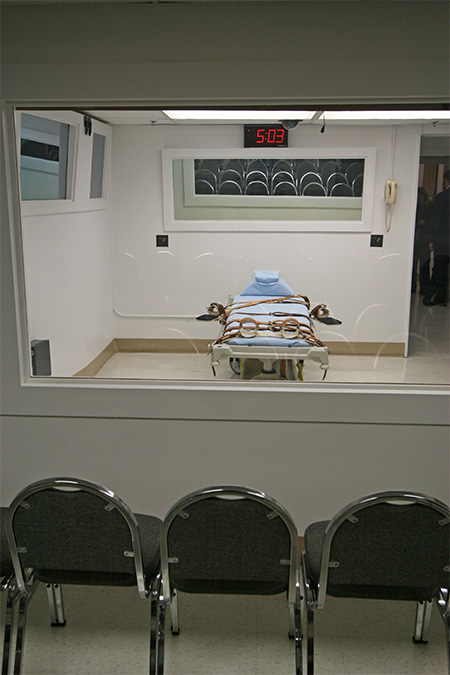 But this weekend, McClain — who wants the state to use the old drug formula, or switch to a single-drug execution protocol — asked the Supreme Court to accept a “declaration” from anesthesiologist John Robert Sneyd regarding the hazards of using etomidate as part of the triple-drug lethal injection cocktail.
But this weekend, McClain — who wants the state to use the old drug formula, or switch to a single-drug execution protocol — asked the Supreme Court to accept a “declaration” from anesthesiologist John Robert Sneyd regarding the hazards of using etomidate as part of the triple-drug lethal injection cocktail.
“Excitatory movements such as myoclonus may compromise electronic brain monitoring and render this method of patient monitoring ineffective for the person attempting the killing to be confident that the subject of the execution attempt is unconscious,” Sneyd wrote.
But Assistant Attorney General Charmaine Millsaps asked the Supreme Court to strike the declaration, arguing that it is procedurally barred because it was never heard by Duval County Circuit Judge Tatiana Salvador before she ruled against Asay’s challenge to the lethal-injection protocol late last month.
“This (Supreme) Court cannot consider factual matters that were not presented to the trial court. The declaration is an attempt to circumvent the trial court’s fact-finding role,” Millsaps wrote in a three-page motion filed Monday.
In a separate filing Monday afternoon, McClain also continued to accuse Bondi’s office of denying Asay the right to due process by hoodwinking his lawyers into agreeing to a delay in a review by the U.S. Supreme Court.
Bondi “utilized her statutory power to bring about an execution date that diminished” Asay’s chances of having the U.S. Supreme Court review his case, McClain wrote in the 30-page brief.
McClain has argued that Bondi misrepresented the status of the case when she gave the governor a go-ahead for scheduling the execution.
After McClain filed an appeal with the U.S. Supreme Court, known as a “writ of certiorari,” this spring, Bondi sought a 30-day extension in the case.
McClain said he interpreted Bondi’s request for a postponement, to which he agreed, to mean that the state would not seek a new execution date for Asay until after the U.S. Supreme Court ruled in the appeal this fall.
Without the 30-day extension, the U.S. justices could have taken up Asay’s appeal before their summer hiatus, which started on June 28 and lasts until October, McClain argued.
Instead, the court gave Bondi until July 5 to file her response to Asay’s request.
Two days before the deadline, Bondi certified to Scott that Asay was eligible for execution. After Scott signed Asay’s death warrant on July 3, setting the execution date for Aug. 24, Bondi quickly filed an objection to Asay’s appeal in the U.S. court.
Since a death warrant has been issued in Asay’s case, it would take five U.S. Supreme Court justices to order a review, instead of the four that would have been necessary to grant a petition in the absence of a pending execution date, McClain wrote in a letter to the governor last month.
But Bondi’s lawyers, in court filings, maintain that the governor has “unfettered discretion” to sign death warrants and is not obligated to wait until the federal appeals have been resolved.
Asay’s execution would be the first carried out in Florida since a January 2016 U.S. Supreme Court decision, in a case known as Hurst v. Florida, that found Florida’s death penalty sentencing system was unconstitutional because it gave too much power to judges, instead of juries.
The sentencing process has since been revised, but the death penalty has been in limbo Florida following the Hurst decision and a series of subsequent state court rulings.
Asay was convicted of the 1988 killings of Robert Lee Booker and Robert McDowell in downtown Jacksonville.
by Dara Kam, The News Service of Florida




